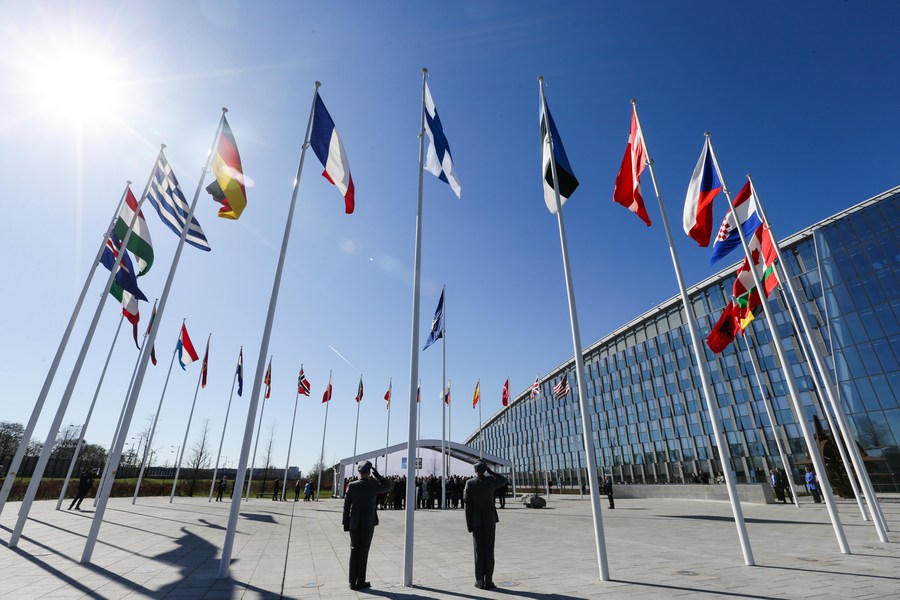The Historical Significance of the GCI

The GCI does not seek conflict with Western civilization — rather, it emphasizes the first principle of Chinese philosophy, ‘harmony’.
Chinese President Xi Jinping put forward the Global Civilization Initiative (GCI) at an international conference in Beijing on March 15, 2023. As the GCI reaches its first anniversary — a moment observed by its champions and detractors worldwide — it is important to recall the historical context in which it was first conceptualized and proposed.
To begin, we need to take a short detour into some well-worn, even threadbare, and much patched-over “grand theories” that were historically popular and have even attempted comebacks over recent years despite having already been swept into the proverbial “dustbin of history.”
First among these theories is Francis Fukuyama’s “end of history,” which he essentially cribbed from the later period of German philosopher Georg Wilhelm Friedrich Hegel. At that time, Hegel, content and self-satisfied, believed he had not only reached the end of history but was the first to do so. Similarly, this concept mirrored what the United States wanted to believe about itself as the Soviet Union dissolved in 1991, leaving America as the sole “shining city on a hill” for all to emulate. Yet, this ideal would fade: even Fukuyama would become disillusioned with this notion, particularly as the U.S. asserted its imperial privilege and deceived the United Nations to garner support for its devastating and illegal invasion, defeat and occupation of Iraq after 9/11.
In fact, 9/11 was a pivotal event, foreshadowing the end of the “end of history,” as was the so-called war on terror that followed it. That same year, China joined the World Trade Organization. Other significant events fell like dominoes, often in contrasting pairs. The U.S.-instigated global financial crisis occurred in 2008, while China’s rise was recognized globally, highlighted by the spectacular Beijing Olympics. The American middle class faced significant declines, alongside increases in suicides, homicides, drug abuse, depression, and other ailments in the U.S., while China moved to eliminate extreme poverty and establish a nation of more than 400 million middle-income individuals, surpassing the total U.S. population, along with overall life expectancy.
Meanwhile, American misadventures in Central Asia, which began in the 1970s when the U.S. first helped organize the Taliban, came full circle. After the U.S., which had since derided the Taliban as adhering to medieval civilizational values in the wake of 9/11, was compelled to retreat following two decades of astoundingly corrupt, neocolonial, and, dare we say, “medieval” misrule, the Taliban returned to power in Kabul and rule today.
In the meantime, China, Central Asian countries, and Russia have worked together, especially through the Shanghai Cooperation Organization, to better promote mutual respect, peace, development, and regional security. These efforts were supplemented by the China-proposed Belt and Road Initiative, offering Central Asian countries and others who had long been subjects of imperialism a way out of chronic Western schemes that seemed determined to keep them as backward as possible.
Nevertheless, throughout this period, the U.S. continued to press NATO expansion toward Russia’s borders and fostered “color revolutions” wherever possible. Meanwhile, the U.S. began its “pivot” against China, a development that accelerated over the past eight years as it became clear that China’s new era was challenging the so-called “collapse thesis.” This theory, a dubious offshoot of the “end of history,” posited that China’s political system would collapse as it modernized, but it was increasingly seen as conceptually bankrupt as well.

In this context, the unimaginative old guards in Washington chose to regress rather than progress, longing for the bygone days and even a new Cold War, perhaps revisiting the mythologies of American greatness associated with the Reagan administration. Yet, this was the era when the U.S. began to hollow out its middle class, precisely when Fukuyama thought the opposite was happening. In a predictably retrograde, reactionary fashion, Western thinkers abandoned Fukuyama’s thesis in favor of the earlier “clash of civilizations” theory, formulated by Fukuyama’s former professor, Samuel P. Huntington.
To be sure, there were still those convinced that the U.S. had indeed reached the end of history. They believed it had discovered the ultimate form of political economy, and, with it, the ability to fully realize the instrumental and intrinsic values of human potential. In fact, these egocentric fantasies have always been central to modern Western thinking and imperialism. Consequently, the “end of history” thesis was not erased and replaced altogether by the “clash of civilizations,” as Fukuyama had once hoped of the former against the latter. Rather, the West has displayed a double standard: remaining loyal to Fukuyama’s theory even after he himself lost faith, while simultaneously embracing Huntington’s normalization of conflict. This contradiction is symbolized by the “rocket’s red glare,” “Saint Javelin” destroying Russian tanks in Ukraine, and white phosphorus raining down on Gaza. If the men of such actions had souls, then these would be the times to “try” them, but not, unfortunately, at the International Court of Justice.
This was the world the West rediscovered. After decades of superficial multiculturalism, the West found that different civilizations worldwide were not reshaping themselves to fit a reductive, Western mold. This is why in part Huntington’s thesis, which described a world fraught with clashes between civilizations — Islamic vs. Jewish and Christian, Chinese vs. Western, Orthodox vs. Catholic, democratic vs. authoritarian — was embraced again. The new devotees are eager to shore up Western universalism as the pinnacle of human civilization, while still trying to ignore the mounting existential crises associated with centuries of global domination by the West.
This is what President Xi rejected. Instead of a “clash of civilizations,” he offered the world the GCI, which, for the sake of deepening exchanges and mutual learning between the civilizations, advocates four essential points (namely, the respect for the diversity of civilizations, the common values of humanity, the importance of inheritance and innovation of civilizations, and robust international people-to-people exchanges and cooperation). And much more. Instead of war, he presented the Global Security Initiative. And instead of crisis capitalism, “vaccine diplomacy,” or other forms of exploitation in the wake of the pandemic, China proposed the Global Development Initiative, in tandem with essential global goods that prioritize people over profit.
Above all, these initiatives represent a logical expression of human values. To be sure, these values were grounded first in the Chinese experience, which itself is a synthesis of 5,000 years of civilizational history, and which, in the modern period, has achieved unprecedented growth and development while eschewing the Western path of exploiting others or kowtowing to the Western line. That said, the GCI does not seek conflict with Western civilization — rather, it emphasizes the first principle of Chinese philosophy, “harmony,” first inscribed on the Oracle Bones millennia ago during the Shang dynasty (1600 B.C.-1046 B.C.).
Against the “clash of civilizations,” against the imperialism and cultural hegemony associated with the West, the GCI offers a vision of validation and dignity — which originates as a form of self-respect and advances as mutual respect, promising a shared future for those who join together, not in conflict, but in peace and prosperity.
Josef Gregory Mahoney is a professor of politics and international relations at East China Normal University and a senior research fellow with the Institute for the Development of Socialism with Chinese Characteristics at Southeast University and the Hainan CGE Peace Development Foundation.
 Facebook
Facebook
 Twitter
Twitter
 Linkedin
Linkedin
 Google +
Google +










